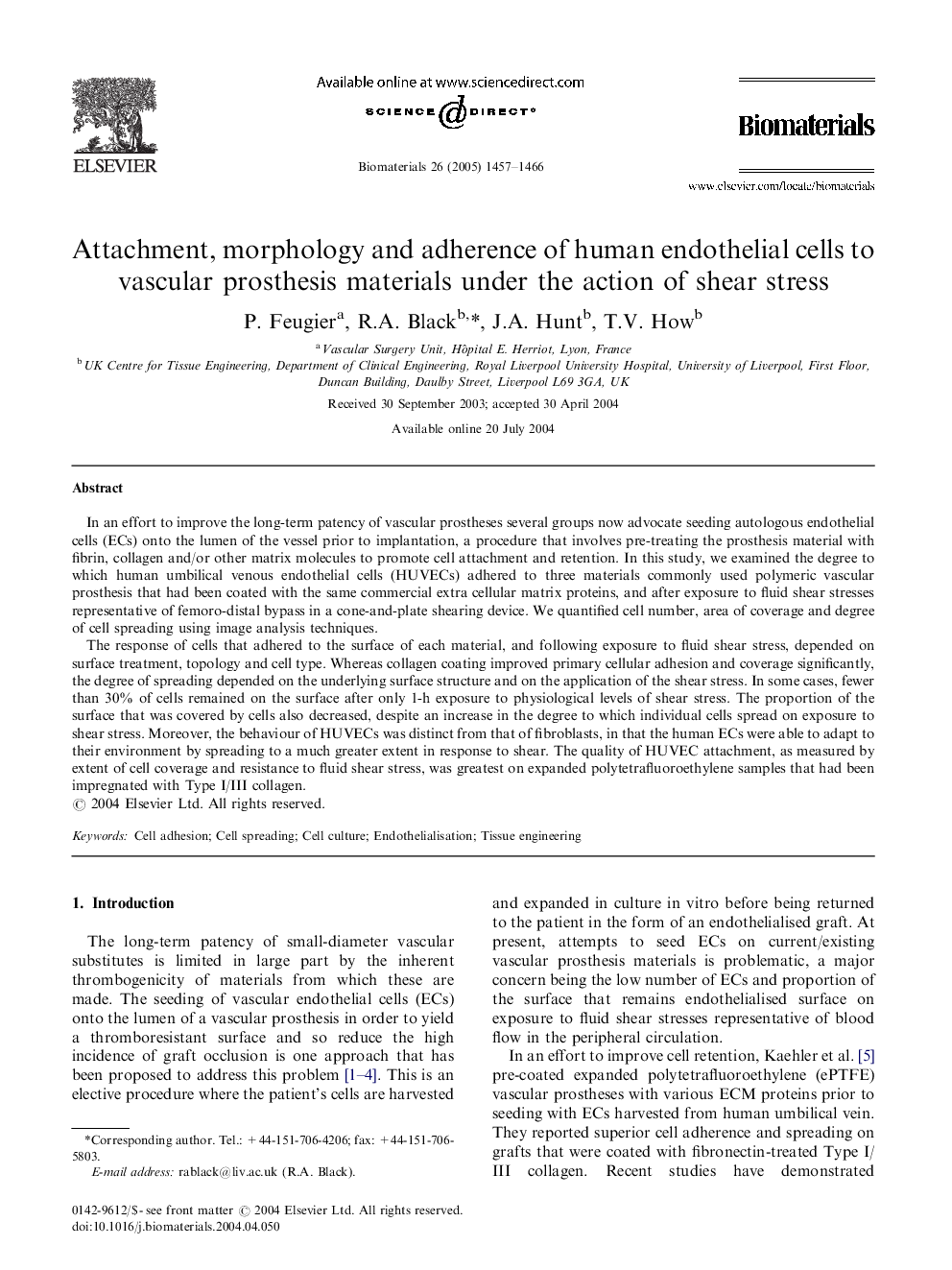| Article ID | Journal | Published Year | Pages | File Type |
|---|---|---|---|---|
| 10230197 | Biomaterials | 2005 | 10 Pages |
Abstract
The response of cells that adhered to the surface of each material, and following exposure to fluid shear stress, depended on surface treatment, topology and cell type. Whereas collagen coating improved primary cellular adhesion and coverage significantly, the degree of spreading depended on the underlying surface structure and on the application of the shear stress. In some cases, fewer than 30% of cells remained on the surface after only 1-h exposure to physiological levels of shear stress. The proportion of the surface that was covered by cells also decreased, despite an increase in the degree to which individual cells spread on exposure to shear stress. Moreover, the behaviour of HUVECs was distinct from that of fibroblasts, in that the human ECs were able to adapt to their environment by spreading to a much greater extent in response to shear. The quality of HUVEC attachment, as measured by extent of cell coverage and resistance to fluid shear stress, was greatest on expanded polytetrafluoroethylene samples that had been impregnated with Type I/III collagen.
Related Topics
Physical Sciences and Engineering
Chemical Engineering
Bioengineering
Authors
P. Feugier, R.A. Black, J.A. Hunt, T.V. How,
